|
by: Sarah Momo Romero This month, I went to Japan for the most incredibly fun, exciting and inspirational two week vacation. My husband and I went to Tokyo, Kyoto and Osaka, and I stopped by a children’s book store at each major city in search of a picture book gem to bring home with me. I had to stop myself from buying all the adorable, beautiful picture books, but I did find quite a few I couldn’t leave without. I wish I knew how to speak Japanese so I could actually read these enchanting stories, but as I always do for these posts, I will focus on the amazing artwork. And as soon as I have the chance, I plan to visit my grandma for story time and translations for my new treasures. Regardless of the language, the best thing about picture books is the art speaks for itself. Here are a few of my favorite finds from my art-filled vacation. (Note: All translated information below is correct to the best of my knowledge, but please forgive me if I’ve gotten any of it wrong.) I found the following collection of picture books at the most adorable children’s bookstore I’ve ever been to, Crayon House, in Tokyo. The cover of Chirri and Chirra immediately caught my attention as capturing the essence of cuteness in Japan. The author and illustrator, Kaya Doi, creates a soft and dreamy world full of delicious treats and friendly animals with her signature colored pencil and crayon. The illustrations of the forest and nature made me think of my early morning walk through Yoyogi Park. It was so peaceful and relaxing, and Doi’s illustrations captured this feeling exactly in her forest scenes. Flipping through this picture book felt like being in a child’s dream or fairy tale, so delightful and enchanting. Chirri and Chirra was translated into English, and you can find it on Amazon: https://www.amazon.com/Chirri-Chirra-Kaya-Doi/dp/159270199X/ref=sr_1_1?ie=UTF8&qid=1525065120&sr=8-1&keywords=chirri+and+chirra This second book, きょうはそらにまるいつき, is by author illustrator Ryoji Arai. The illustrations are the complete opposite of Chirri and Chirra, with its textural brushstrokes and darker color palette. Ryoji captures the energy of city life, with brilliant lights against the night sky, and the quiet moments filled with warmth. I love Arai’s different perspectives on the world he creates, including the bird’s eye view of the city below. With so many skyscraper buildings and high-rises in Tokyo, it’s easy to see why Arai would choose to create a view of the bright bustling city contrasted with the darkness of the lush park in the distance. I found the link for this book on Japan’s Amazon, but unfortunately was not able to find an English version. The Mountain of Flowers by Jiro Takihira and Ryusuke Saito is simple and stunning. The contrast of the black background against the stark white figures and minimal color exude a unique sense of character and place. This very graphic style of illustration is reminiscent of wood-cut block printing with an abstract and minimalistic color palette. I just have to have this book for my collection. You can find this book here: https://www.amazon.com/Mountain-Flowers-R-I-C-Story-Chest/dp/1741264413/ref=sr_1_2?s=books&ie=UTF8&qid=1525067427&sr=1-2 And last but not least, Millie’s Marvelous Hat by Satoshi Kitamura, is my favorite discovery from Tokyo. I loved Kitamura’s uneven, whimsical linework and his vivid use of water color. The faces on his characters are playful and distinct, each one with his or her own imaginative hat and I loved the little details on the page. Kitamura has a way of using patterns and distinctive shapes to create a playful world rich in details without being realistic. And Millie is just plain adorable. You can find his book here: https://www.amazon.com/Millies-Marvellous-Hat-Satoshi-Kitamura/dp/0761351531/ref=sr_1_1?ie=UTF8&qid=1525069145&sr=8-1&keywords=millie%27s+marvelous+hat This trip to Japan has opened my eyes to a culture and lifestyle that has captured my heart and ignited ideas and inspiration beyond my expectations. I hope you've enjoyed seeing a glimpse of Japan through my picture book finds. I definitely enjoyed looking for these gems, and think I've discovered my new pass-time for vacation - picture book hunting in new cities! Have you found any cute and unique children's book stores during your travels? Do you have a unique children's book store you love to visit outside of Los Angeles? I'd love to hear about it to add to my list!  Sarah Momo Romero is a Japanese Peruvian American artist, a graphic designer by day and children's book author and illustrator by night. She’s loved drawing and painting since she was a chiquita and now crafts stories of adventure and wondrous creatures. Sarah is an active SCBWI member who draws inspiration from her life in sunny Los Angeles with her husband/creative partner and dog/infamous escape artist, Peanut. Look out for her first picture book, "Wake Up, Little Bat!" coming out in the Fall of 2018! You can find more of Sarah's musings and drawings here:
www.sarahmomoromero.com Facebook: Sarah Momo Romero + Instagram: @sarahmomoromero + Twitter: @sarahmomoromero
The Oxford Dictionary defines metafiction as… fiction in which the author self-consciously alludes to the artificiality or literariness of a work by parodying or departing from novelistic conventions and traditional narrative techniques. Metafiction is a postmodernist device in which the author transgresses conventional approaches to storytelling. This manifests itself as the fourth wall (when the narrator addresses the reader directly), which can in turn lend itself to incongruous humour. This is a surrealist technique of subverting the reader's expectations of the narrative structure.
The Monster at the End of this Book by Jon Stone and Michael J. Smollin. Okay, this book is not exactly new. It’s a classic - a pioneer of metafictive humour. It’s hard to find a more perfect example of the use of the refrain ‘DO NOT’, to tie its young readers up in knots and stitches. Loveable Furry Old Grover from Sesame Street, takes the part of the narrator. In fourth wall-style, he lets the reader in on his fear of monsters and implores them NOT to turn the page. Of course, this is a red rag to a bull, for every child reading along, and storytime becomes a flurry of interactive laughter and humour. The reader attempts to stick to convention and read the book in a linear way, but the child repeatedly transgresses this convention. They grab the pages, turning them with gusto, in defiance of Grover’s warnings. The twist at the end provides the final incongruity – Grover is the feared monster at the end of the book! You know you are onto a winner when other books mirror your style and for a more contemporary spin on Stone’s 'DO NOT' technique, you may wish to check out Australian comedian Andy Lee’s commercial hits Do Not Open This Book (2016) and sequel Do Not Open This Book Again (2017). The forbidden fruit premise drives the kids nuts and reels them in seemingly effortlessly, or is that Lee's metafictive skill at play? Do Not Lick This Book (It's Full of Germs) by Idan Ben-Barak and Julian Frost. Not sure if US and UK readers will have heard of this one, so it’s my opportunity to put it on your radar. It’s an excellent example of a humorous narrative non-fiction. The Children’s Book Council of Australia has just short-listed Do Not Lick This Book in its Book of the Year Awards. Full marks to the creators for originality, and acute awareness of the incongruous power of DO NOT. Being at the gross age he is, my son simply could not hold himself back from licking this book on numerous pages, despite the narrator warning him not to. I think the author and illustrator team would consider this their jobs done. Ben-Barak, Frost and Linnea Rundgren are introducing the scientific concept of microbes and germs in an accessible way for young readers. The narrator actively encourages kids to touch the book, pick up the protagonist Min the Microbe and take her on a journey over their bodies, where she will pick up a whole gang of microbes. This seemingly incongruous idea of avoiding germs (do not lick) and openly embracing the microbes we encounter at every turn, is a transgressive yet effective way of teaching kids what germs are and how easy it is to pick them up. The Book With No Pictures by B.J. Novak. And finally, I can’t leave off blogging without a superb example of the Power of No as a humour device, in one of the funniest read-aloud books you’ll encounter. In this 2014 non-illustrated picture book (an incongruity in itself), the author breaks the fourth wall with point of view moving between the author/narrator and the reader. The reader is masterfully drawn into the narrator’s subversive world, explaining how a book with no pictures works. It relies on the reader being forced to say incredibly silly things in incredibly silly voices. The child listening to the story, initially mistrustful of a picture book that breaks convention, is quickly sucked in by the word play and creative use of type-setting. This is surely the best literal example I’ve found of not judging a book by its cover. I recommend you seek it out, if you've not yet read it. There are seemingly a million examples of metafiction I could have discussed in this piece, but hopefully these books have inspired you to take a closer look at this genre. It may very well be a publishing trend that exhausts itself, but it has certainly done its job of engaging young readers. Any book that does that is a winner, transgressive or not. Brydie Wright Bio
Graduate, Craft & Business of Children’s Picture Book Writing Course Chief Editor, Sydney Mums Group and Reviewer, WeekendNotes Author of Daddy and the World's Longest Poo, IAN Awards 2017 Finalist, & Magic Beans from the Creative Kids Tales Story Collection Website - Facebook - Twitter - Goodreads By Bryan Patrick Avery Friday the 13th just passed, and that got me thinking about scary stories and why they appeal to readers. We have all experienced it: you’re reading a book and keep telling yourself “just one more chapter.” Before you know it, it’s way past bedtime but you still can’t stop. You just must find out what happens next. This month, let’s look at three books that give examples of how to craft a story readers won’t want to put down. First, we’ll look at a classic story from a master of suspense for children, R.L. Stine. “Say Cheese and Die!”, from the famed Goosebumps series, is the story of Greg, who finds (steals, really) a very strange camera. The pictures he takes with the camera are never quite right. When he takes a picture of his friend Mike, the photograph shows Mike falling down the stairs. Then, Mike actually falls down the stairs. A picture of his father’s new car shows the car completely wrecked. Than, his father is in a horrible accident. As things get stranger and scarier, Mike decides he must return the camera to the old abandoned house where he got it, but even that proves to be difficult. his book is hard to put down, in no small part because of R.L. Stine’s chapter ending cliffhangers which demand you keep reading. I know many see cliffhangers as a cheap plot device but they really can be effective in driving the story, and the reader forward. The Peculiar Incident on Shady Street, written by Lindsay Currie, is equal parts creepy and heartwarming. The tale centers around Tessa, who has relocated to Chicago with her family. Almost immediately, strange things start happening around the house. She hears crying at night, her little brother’s ventriloquist doll cries real tears and, at times, the house gets frighteningly cold. With a few new friends, Tessa begins to investigate the history of this haunted house and discovers an old mystery. She also, perhaps most important, discovers the value of friendship and learns that her new home isn’t so bad after all. What makes this story work so well is that, mingled with the creepy goings on in the house is a story of friendship and family that everyone can relate to. That gives the reader a break from the fright and provides an emotional connection between the reader and Tessa. Currie’s novel is an excellent example of suspenseful writing at it’s best. Lastly, I’d like to share what has become, for me, a very useful resource in my writing, Mastering Suspense Structure and Plot by Jane K. Cleland. Winner of the 2016 Agatha Awards for Best Nonfiction, Cleland’s book is broken into two equally important sections: Thinking and Writing. Part One: Thinking, covers the planning and plotting process of the book. Part Two: Writing, covers useful approaches for ratcheting up suspense and engaging the reader. It includes helpful sidebars activities. My favorite is the Metaphor Machine, which helps authors find ways to express things that are abstract or intangible, like isolation. Of course, Mastering Suspense Structure and Plot isn’t just for horror or suspense writers. Every story can benefit from the tools and techniques Cleland shares with us. After all, every story asks a question that must be answered. The road the story takes en route to answering question will determine whether readers keep reading or not.
That’s all for this month. No cliffhangers here. I’ll see you next month. Happy writing. By Melissa Stoller The ending in a picture book wraps up the story through the words and illustrations. Sometimes, an ending ties the story together neatly like a bow around a present. Other times, a story can conclude with a surprise twist. Hopefully, the final page will leave the reader wanting more. A good ending can evoke emotion, spark curiosity, or challenge assumptions about the story arc. And an excellent ending can even make an author consider: why didn’t I think of that? Here are five of my favorite endings from recent picture books. To get the full impact, read the whole story: 1) “Charlotte missed her family. She even . . . missed being squished. So, she tried one last experiment . . . And reached a new conclusion. Charlotte didn’t need outer space . . . she just needed her own space.” Charlotte the Scientist is Squished, written by Camille Andros, illustrated by Brianne Farley. 2) “There are eleven songs in Eduardo’s Rock Opera. And a puppet show. And some robots. But the best part, if you ask Carmen . . . is the surprise ending.” Starring Carmen, written by Anika Denise, illustrated by Lorena Alvarez Gomez. 3) “Then you arrive home again, and you look at your window from the outside. Someone you love is waving at you, and you can’t wait to go in. So you do. Windows, Julia Denos, illustrated by E. B. Goodale. 4) “Then you’ll march over to your sandcastle and order your dragon to leave until he learns some manners. And you will vow never to build a perfect sandcastle again. At least until tomorrow.” When a Dragon Moves In, written by Jodi Moore, illustrated by Howard McWilliam. 5) “Bagel and Cupcake danced circles around the other contestants. Their fancy moves wowed the judges. But for Bagel and Cupcake, winning the grand prize trophy was just icing on the cake.” Bagel in Love, by Natasha Wing, illustrated by Helen Dardik. * * * As you complete your picture book manuscript, pay particular attention to the last lines. Create an ending that inspires awe, surprise, wonder, or excitement. And definitely draft a finale that encourages the reader to pick up the book again and again! BIO:
Melissa Stoller is the author of the chapter book series The Enchanted Snow Globe Collection - Book One: Return to Coney Island and Book Two: The Liberty Bell Train Ride (Clear Fork Publishing, 2017 and Summer 2018); and the picture books Scarlet’s Magic Paintbrush and Ready, Set, GOrilla! (Clear Fork, Summer and Fall 2018). She is also the co-author of The Parent-Child Book Club: Connecting With Your Kids Through Reading (HorizonLine Publishing, 2009). Melissa is an Assistant for the Children’s Book Academy, a Regional Ambassador for The Chapter Book Challenge, an Admin for The Debut Picture Book Study Group, and a volunteer with the Society of Children’s Book Writers and Illustrators/MetroNY. Melissa has worked as a lawyer, legal writing instructor, freelance writer and editor, and early childhood educator. Melissa lives in New York City with her husband, three daughters, and one puppy. When not writing or reading, she can be found exploring NYC with family and friends, traveling, and adding treasures to her collections. CONNECT: www.MelissaStoller.com http://www.facebook.com/MelissaStoller http://www.twitter.com/melissastoller http://www.instagram.com/Melissa_Stoller http://www.pinterest.com/melissastoller Hullo fabulous creative, if you are like most writers and have to deal with your present, past and future tenses running away and getting mixed up, read on. In today's blogpost, that is largely lifted from a newsletter that I recently sent out, I'm going to give you a super easy tip for dealing with wrangling tenses along with a few other super helpful writer's tips. :) Tip #1 Wrangling Tenses Print out your manuscript and get 3 contrasting highlighters, eg, pink, yellow, and blue. Now go through your manuscript and highlight all your past tenses together with one color. Then do the same with each of your remaining tenses so that it’s clear where you are switching tenses. Finally, especially with younger age stories, pick a tense and do your best to stick with it. Of course there may be parts where you need to change tenses, but this will help you be very mindful of where you are doing it and whether it's needed. Here’s a fun joke: The Past and the Future walked into a bar. Things were pretty tense. Tip #2 Need some sparkle in your story? If your story is a little lackluster - make or use some metaphors or similes. A metaphor or simile can add poetry or it can add humor. Metaphors are when you put two dissimilar things together to evoke an emotion or provide a poetic description. “Melanie looked out at a sea of smiles.” A simile is a type of metaphor, but where you use the word “like” or “as” as in my soon to come example. I’m currently in the final stages of putting together what’s shaping up to be another truly groundbreaking course. This one is an inspirational craft course on writing funny books for kids or infusing humor into existing stories. I cannot tell you how many times I’ve laughed out loud, but in the section on metaphors and similes, that also incorporates the element of surprise, I added this little simile example, “Melanie’s face was like the sun. [page turn]. It was big and round and hot and yellow. Oh no! What was wrong with Melanie?” If you are interested in exploring metaphors and similes, here are some cool resources. https://literarydevices.net/a-huge-list-of-short-metaphor-examples/ http://www.macmillandictionaryblog.com/a-list-of-metaphors And some great similes http://www.writers-free-reference.com/100bestsimile.htm http://examples.yourdictionary.com/simile-examples-for-kids.html Tip #3 If you'd like to play with sections from your own work and learn from others, learn llots and maybe win a prize, register now for our fab FREE INTERACTIVE ONLINE WORKSHOP/TRAINING on character, emotion, and action in picture books, which all writers will learn from. This Thursday April 5th in the comfort of your own home, library, or cafe! Just click the link below to register. http://www.childrensbookacademy.com/the-writers-trifecta.html Tip #4 (the very best tip) Join the most helpful picture book writing course that you’ll ever take with MANY submission opportunities, a fab $40 discount and more extraordinary news to come! http://bit.ly/cbwpb I hope some of this has been helpful. Do join us in our upcoming free workshop. And if any of this has been helpful, please leave a comment below. :)
Brief Bio: Dr. Mira Reisberg is the founding director of the Childre's Book Academy, an Editor and Art Director and an A type overachieving creative with a ridiculously long resume! Mira is passionately committed to helping people make wonderful children's books to get them published and into children's hands. |
We are so excited to be mixing things up at CBA, beginning with some delicious additions to the Blogfish. Meet our awesome bloggers!!
Here's our lineup: 1st Mondays begin with former school psychologist Dr. Debra Collins who will be writing about Social emotional Learning in kidlit and behind the scenes as well as Jewish children's books. 2nd Mondays will feature super smart Melissa Stoller whose career is taking off with several new books. 3rd Mondays will feature our new blogger coming soon. 4th Mondays features new blogger, the fabulous Brentom Jackson, who has a beautiful approach to blogging. And 5th Mondays we'll be taking a break Archives
July 2024
|
|
Discover
|
About Us
|
Join Us
Join our Community and receive a fabulous free gift, KidLit tips, newsletters, scholarship info, contests, and more!
Join our KidLit Mentorship |
Social Media
Interact with our FaceBook Group or follow us on:
|
© 2010-2024 All content on this website is copyrighted. Sorry, all courses are non-refundable.

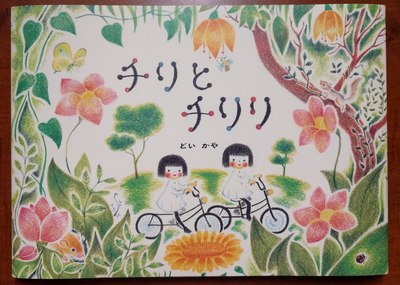
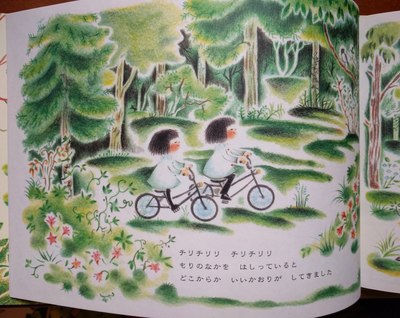
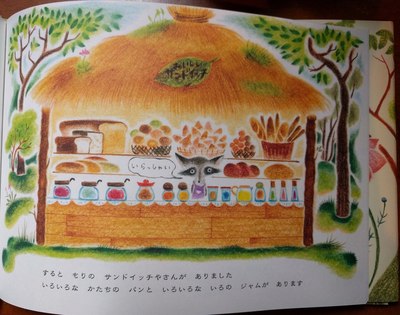
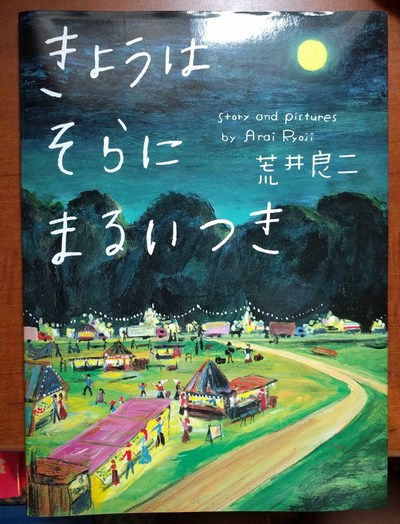
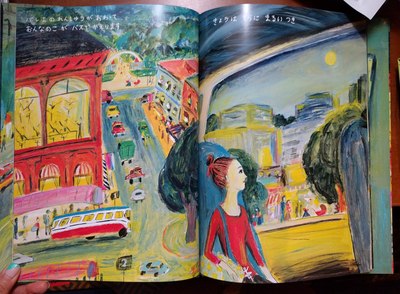
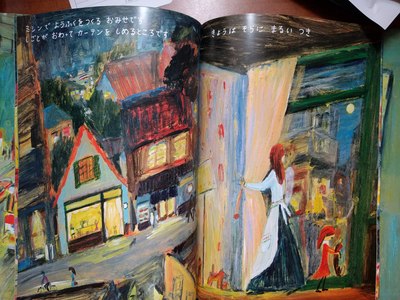
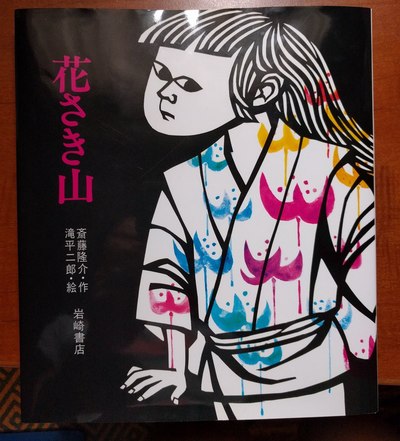
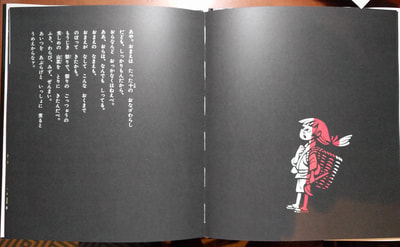
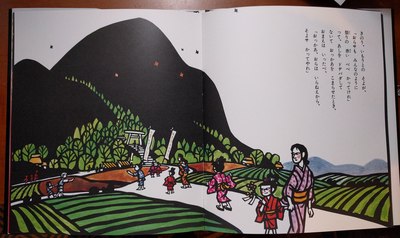
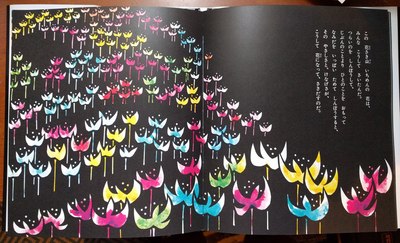
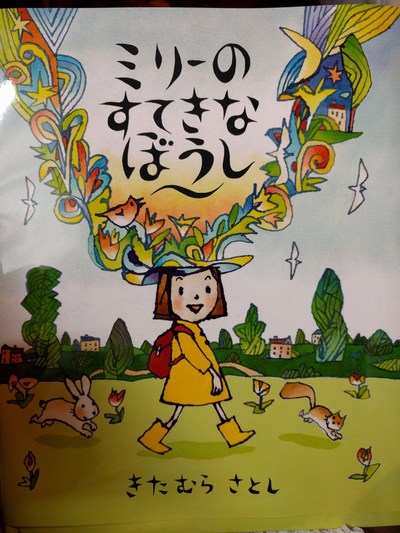
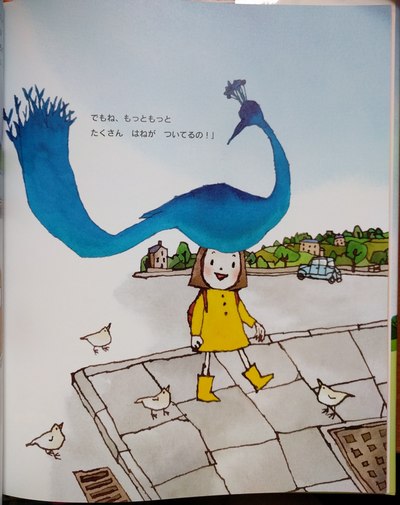
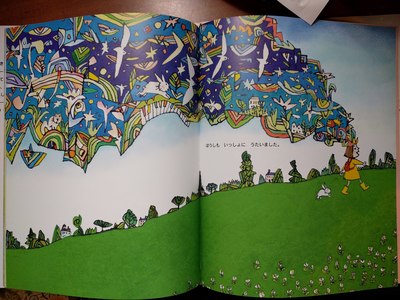
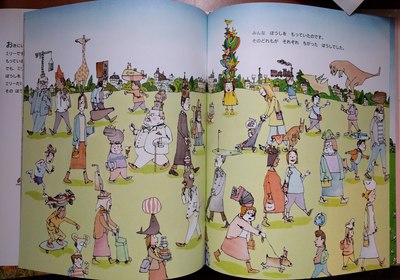
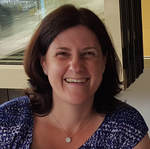
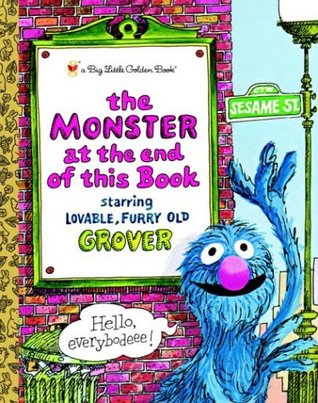
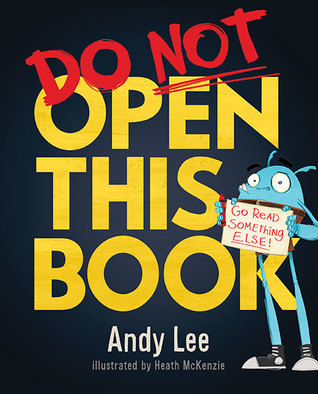
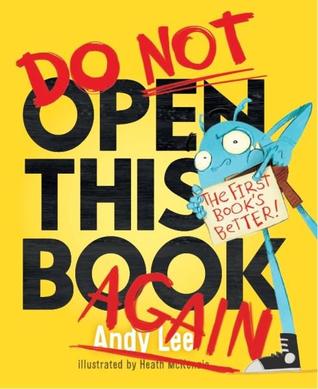
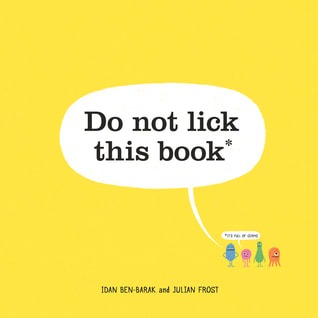
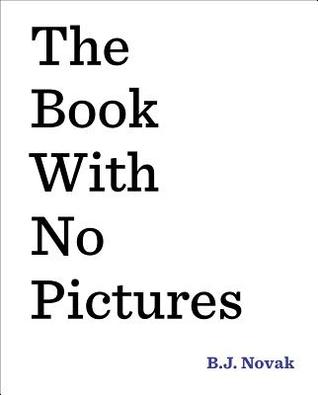
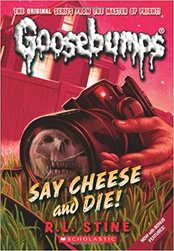
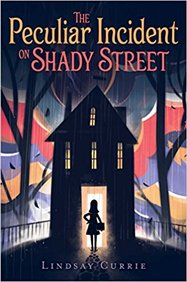
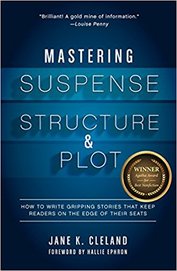
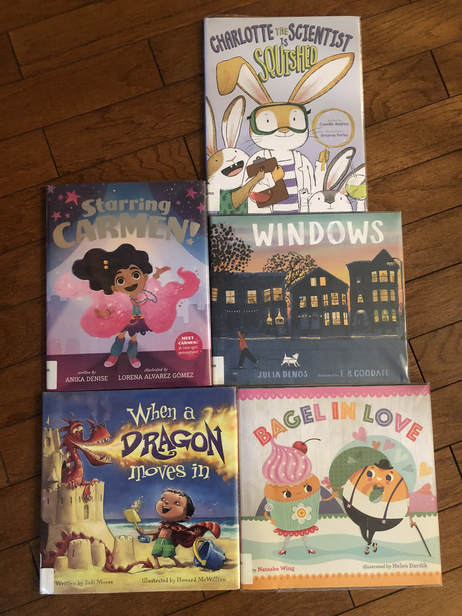
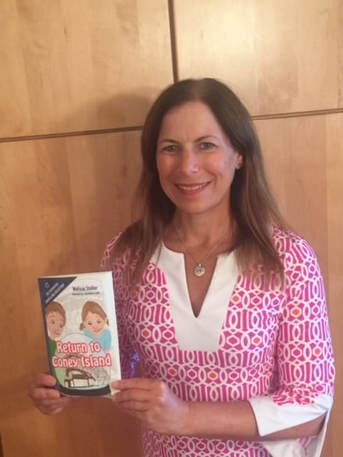
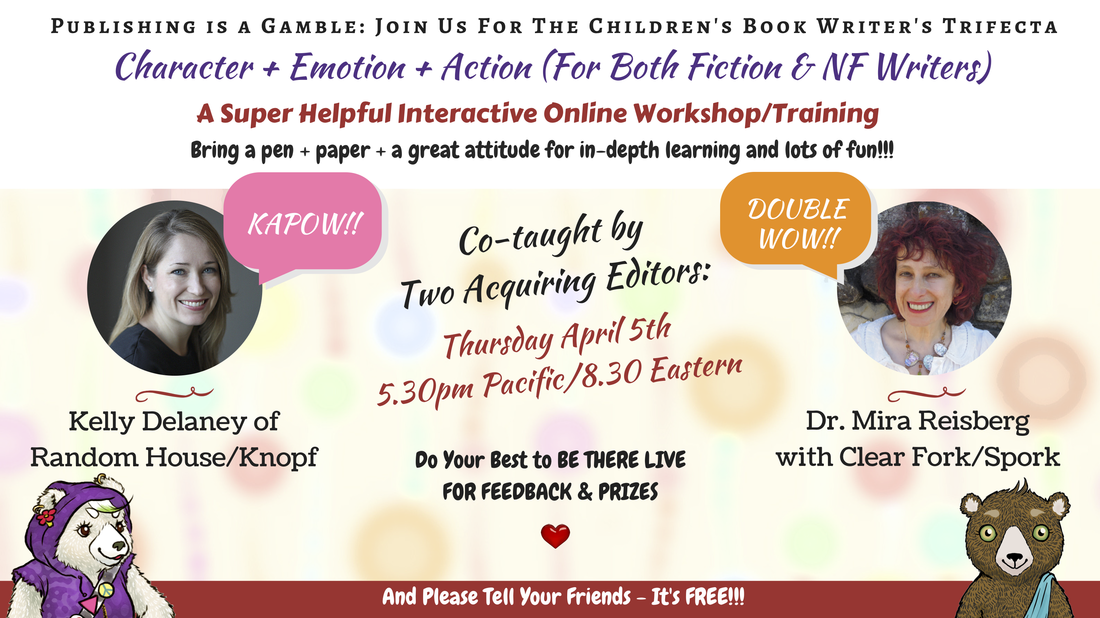
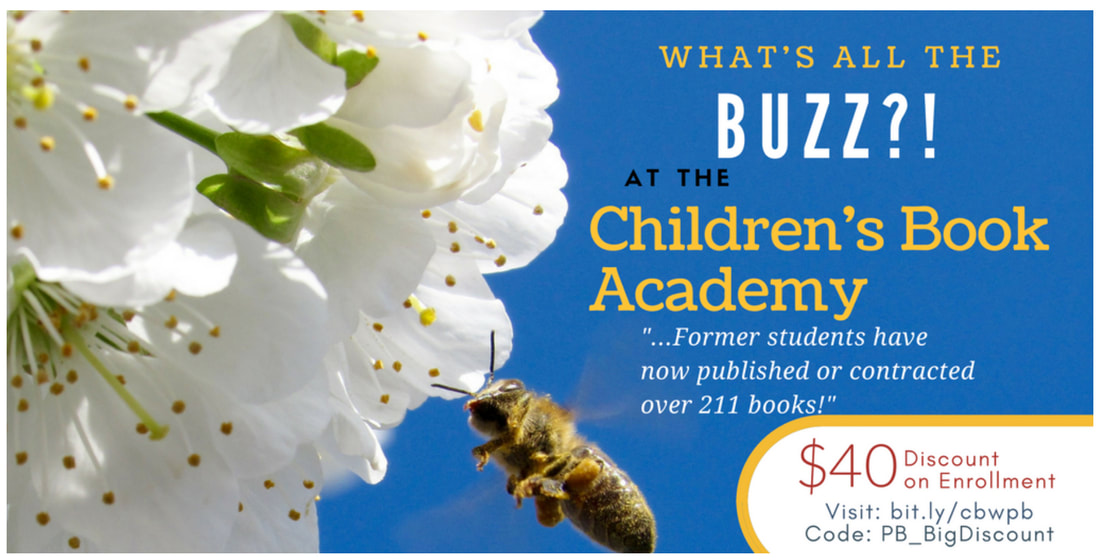
 RSS Feed
RSS Feed
